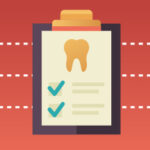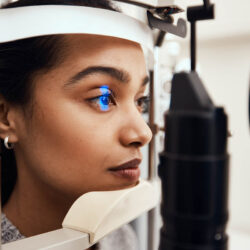The statistics around diabetes are staggering: More than 37 million US adults have diabetes, and 1 in 5 of them don’t know they have it. According to the Centers for Disease Control and Prevention, the number of adults diagnosed with diabetes has more than doubled in the last 20 years.1 Much of that increase is due to widespread changes in lifestyle, health habits and increases in obesity. For those with diabetes, eating well is about more than just avoiding sugar. Experts are increasingly looking at the role diet can play, not just in causing diabetes, but in potentially curing it.
There are three types of diabetes: type 1, type 2 and gestational diabetes. Gestational diabetes develops during pregnancy and usually goes away after birth. Type 1 diabetes occurs when the body stops making insulin, believed to be the result of an autoimmune reaction. With type 2 diabetes, however, the body develops resistance to insulin and struggles to keep blood sugar normal.
While type 1 and gestational diabetes can have significant impacts, over 90% of people with diabetes have type 2. The good news is that type 2 diabetes can be managed and potentially even reversed. The bad news is that treating its causes requires education and means changing long-established behaviors.2
Risk for prediabetes and type 2 diabetes is closely tied to weight and activity level. Being overweight and physically active less than three times per week are predominant risk factors. Risk factors for type 1 diabetes are not as clear but may include genetics.3
Complications of High Blood Sugar
The insulin resistance of type 2 diabetes means the body needs more insulin to keep blood sugar at a normal level. Blood sugar levels need to be checked repeatedly throughout the day and around meals. This is typically done using a finger prick blood test. If blood sugar levels are high, insulin is injected. Other medications may be used to manage blood sugar as well.4
High blood sugar can be dangerous and can lead to both short- and long-term complications. Symptoms of high blood sugar include blurred vision, headache and fatigue. If left unmanaged, chronic high blood sugar can cause nerve damage in limbs and even in the heart and digestive system. It can also cause kidney disease, eye and vision damage and slow healing of infections.5 In fact, diabetes is the number one cause of kidney failure, lower-limb amputations, and adult blindness.6
Diabetes and Lifestyle
While medication is an important part of managing type 2 diabetes, it can only help keep the condition in check. Lifestyle changes including a healthy diet and exercise leading to weight loss, can help improve diabetes and, in some cases, remove the need for medication.
During exercise, muscles use sugar for energy. This can help balance high blood sugar, reduce insulin resistance and reduce the need for insulin. While strenuous exercise will have a longer-lasting impact, even light activity helps. Always monitor your blood sugar level before, during and after exercise.7
What you eat has the greatest impact on blood sugar levels, particularly carbohydrates. Two types of carbohydrates, sugars and starches, spike blood sugar. Processed foods often contain large amounts of these carbohydrates. Eating too much processed food, including fast food, snacks, sugary drinks and many prepared frozen meals, can contribute to developing diabetes. These foods often also contain high levels of sodium which can be bad for your heart. Continuing this unhealthy diet while diabetic or prediabetic can make diabetes harder to manage.
Low-Carb Life
There is growing evidence that low-carbohydrate diets can help people living with diabetes and prediabetes. While the definition of “low carb” will vary for each person, the American Diabetes Association (ADA) recommends limiting daily calories from carbohydrates to 26-45% of total calories. Counting carbs can be intimidating, but the ADA has many resources to help.8
A low-carb diet will likely include lots of whole, non-starchy vegetables like greens, broccoli, squash and tomatoes. Foods like beans, fruit, bread and rice include more starch (and therefore carbs) than others, but these can be enjoyed too. Fiber, found in many whole fruits, vegetables and grains, is also a carbohydrate, but it doesn’t have the same effect on blood sugar as sugars and starches. Refined grains, sweets and processed foods should be limited.9
Diet and exercise leading to weight loss is one of the best approaches to managing diabetes. In addition to prescribed medication, work with your doctor or registered dietitian nutritionist to develop an exercise and eating plan that works for you. If address early, these lifestyle changes can make a significant difference.
1 Centers for Disease Control and Prevention,, “What is Diabetes?”
2 Centers for Disease Control and Prevention,, “What is Diabetes?”
3 Centers for Disease Control and Prevention,, “Diabetes Risk Factors”
4 Centers for Disease Control and Prevention,, “Type 2 Diabetes”
5 Mayo Clinic, “Type 2 diabetes”
6 Centers for Disease Control and Prevention,, “What is Diabetes?”
7 Mayo Clinic, “Diabetes management: How lifestyle, daily routine affect blood sugar”
8 American Diabetes Association, “Recipes & Nutrition”
9 American Diabetes Association, “Understanding Carbs”














